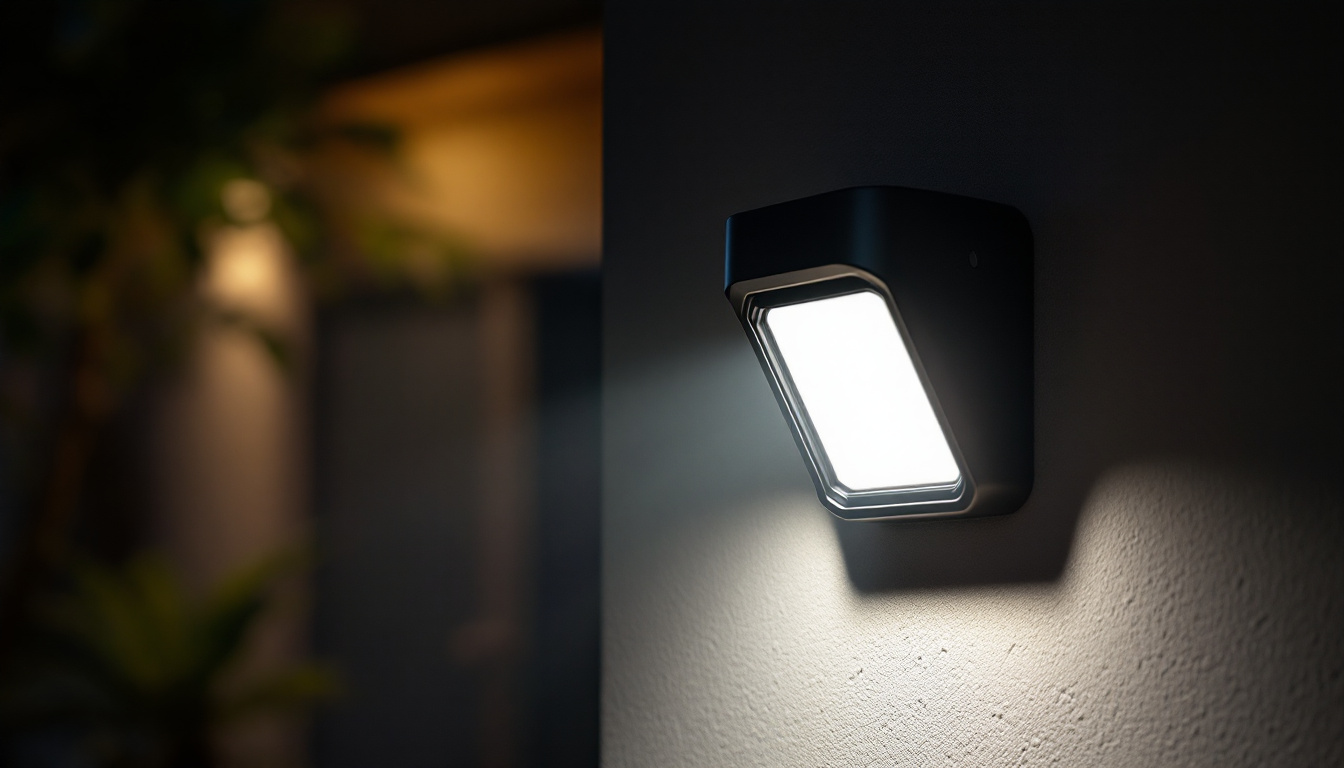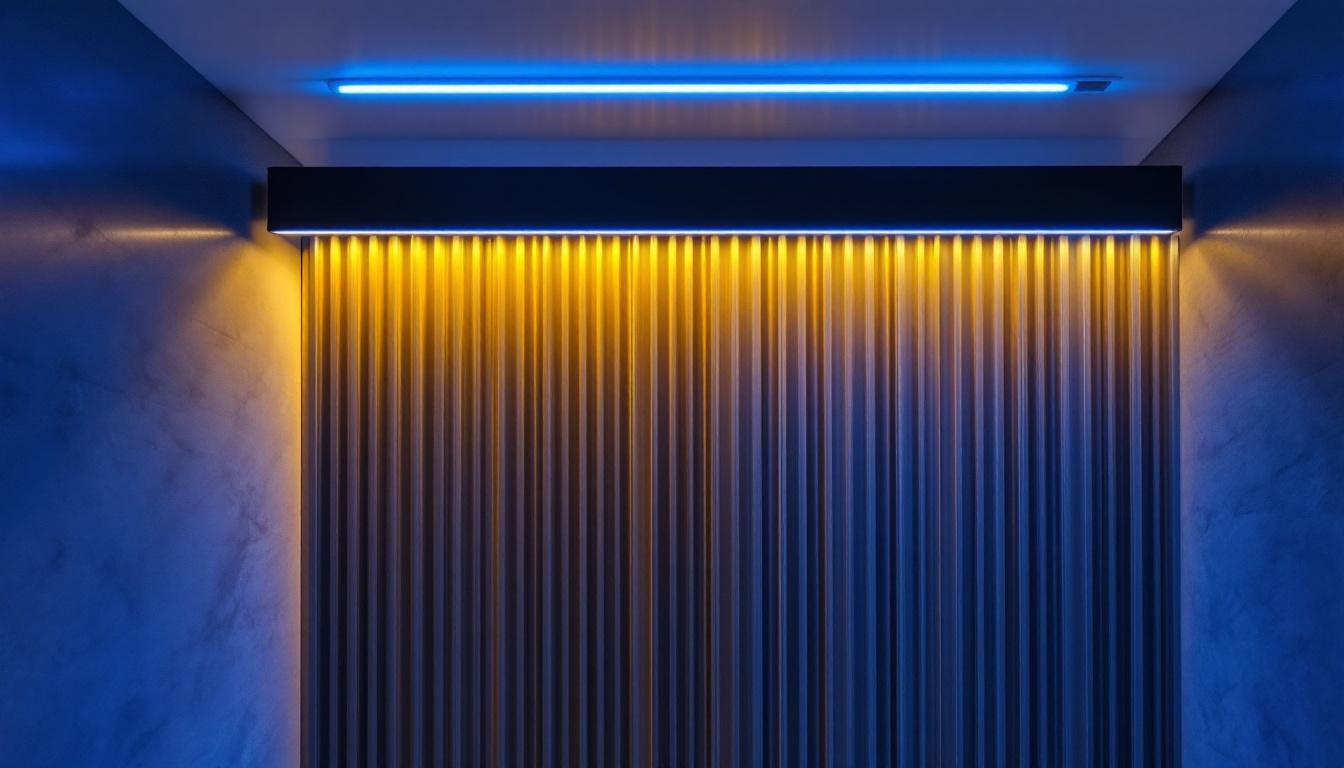
In an era where security and energy efficiency are paramount, motion detector security lights have emerged as a popular solution for both residential and commercial properties. These devices not only enhance safety by illuminating areas when movement is detected, but they also contribute to energy savings by minimizing unnecessary lighting. For lighting contractors, understanding how to optimize these systems can lead to improved performance and customer satisfaction. This article explores various strategies to maximize the efficiency of motion detector security lights.
Before diving into optimization techniques, it is essential to grasp the underlying technology of motion detector security lights. These devices typically use one of two primary technologies: passive infrared (PIR) sensors and microwave sensors. Each has its advantages and limitations, influencing how they should be deployed.
PIR sensors detect changes in infrared radiation, which is emitted by objects in their field of view, primarily humans and animals. They are most effective in detecting motion across a defined area, making them ideal for outdoor lighting applications. However, their performance can be affected by environmental factors such as temperature and humidity.
To optimize PIR sensors, positioning is crucial. They should be installed at an angle that maximizes their field of view while minimizing false triggers from passing cars or swaying branches. Additionally, adjusting the sensitivity settings can help tailor the response to specific environments, ensuring that the light activates only when necessary. Furthermore, incorporating a delay feature can prevent the lights from turning on for brief movements, such as those caused by small animals, thus conserving energy and prolonging the lifespan of the bulbs.
Microwave sensors operate by emitting microwave signals and measuring the reflection from moving objects. They are more sensitive than PIR sensors and can detect motion through walls and other obstacles. This capability makes them suitable for various applications, including areas with obstructions.
However, the heightened sensitivity can lead to false alarms, particularly in environments with high foot traffic or wildlife. To optimize microwave sensors, contractors should consider the installation height and angle, as well as the sensitivity settings. Proper calibration will ensure that the lights activate only when intended, reducing energy waste and enhancing user satisfaction. Additionally, some advanced microwave sensors come equipped with adjustable detection zones, allowing users to define specific areas for monitoring. This feature can be particularly beneficial in commercial settings, where it is essential to focus on critical access points while ignoring less important areas, thus streamlining security measures and enhancing overall safety.
The effectiveness of motion detector security lights hinges significantly on their placement. Thoughtful positioning can enhance detection capabilities while optimizing energy efficiency. Here are some key considerations for strategic placement.
When installing motion detector lights, it is vital to identify areas with high foot traffic or potential security threats. Common locations include driveways, walkways, entry points, and outdoor gathering spaces. By focusing on these areas, contractors can ensure that the lights provide maximum illumination when it is most needed.
Additionally, placing lights near potential entry points, such as doors and windows, can deter intruders and enhance overall security. The strategic placement of lights not only improves safety but also minimizes energy consumption by activating only in response to real movement. For instance, illuminating a pathway leading to the front door not only guides guests safely but also signals that the area is monitored, creating a psychological barrier for would-be intruders.
Environmental factors play a significant role in the effectiveness of motion detector lights. Elements such as trees, shrubs, and buildings can obstruct the sensor’s field of view, leading to reduced performance. It is crucial to assess the surroundings before installation to ensure that nothing interferes with the sensor’s ability to detect motion.
Moreover, weather conditions can impact the functionality of motion detectors. For instance, heavy rain or snow can obscure sensors, leading to false triggers or missed detections. Therefore, selecting weather-resistant models and positioning them to minimize exposure to harsh elements can enhance reliability. Additionally, considering seasonal changes is important; for example, deciduous trees may block light during the summer months but be bare in winter, altering the sensor’s effectiveness. By planning for these variations, homeowners can ensure consistent performance throughout the year, providing peace of mind regardless of the season.
One of the most effective ways to optimize motion detector security lights is by fine-tuning their sensitivity and timing settings. These adjustments can significantly impact the performance and efficiency of the lighting system.
Most motion detectors come with adjustable sensitivity settings that allow contractors to customize the responsiveness of the lights. Setting the sensitivity too high may result in frequent false activations from small animals or passing vehicles, while too low a setting may cause the lights to miss legitimate movement.
To find the optimal sensitivity level, contractors should conduct tests in the intended environment. This process involves observing the light’s response to various types of movement and adjusting the settings accordingly. A well-calibrated sensor will activate only when necessary, ensuring energy efficiency and reducing wear on the lighting system. Additionally, it is beneficial to consider the time of day and environmental factors, such as wind or rain, which can also affect motion detection. By taking these elements into account, contractors can create a more reliable and effective lighting solution that minimizes unnecessary activations while still providing security.
The timing settings determine how long the lights remain illuminated after detecting motion. Adjusting this duration can help optimize energy consumption while ensuring adequate visibility. Typically, a range of 30 seconds to several minutes is available, depending on the model.
Contractors should consider the specific needs of the installation site when setting the timing. For instance, lights near a busy entrance may require longer activation times, while lights in less frequented areas can have shorter durations. This tailored approach not only enhances user experience but also contributes to energy savings. Furthermore, it is important to educate users about the timing settings, as they may wish to adjust them based on seasonal changes or varying foot traffic patterns. For example, during the winter months when evenings are longer, users might prefer extended lighting durations to enhance safety and visibility. By providing clear guidance on how to adjust these settings, contractors can empower users to maintain optimal performance throughout the year.
As technology advances, smart motion detector security lights have become increasingly popular. These systems offer enhanced features that can significantly improve efficiency and user control. Understanding how to leverage these technologies can provide contractors with a competitive edge.
Many modern motion detector lights can be integrated into smart home ecosystems, allowing users to control their lighting remotely via smartphones or smart assistants. This capability enables homeowners to customize settings, monitor activity, and receive alerts when motion is detected.
For contractors, recommending smart motion detector lights can enhance customer satisfaction and provide added value. By demonstrating how these systems can be integrated into existing smart home setups, contractors can position themselves as knowledgeable experts in the field.
Some advanced motion detector security lights come equipped with energy monitoring features that allow users to track their energy consumption in real-time. This information can be invaluable for homeowners looking to reduce their energy bills and minimize their environmental impact.
Contractors can leverage these features to educate clients about energy efficiency and the long-term savings associated with using motion detector lights. By highlighting the cost-effectiveness of these systems, contractors can encourage more widespread adoption among their clientele.
To ensure the long-term efficiency of motion detector security lights, regular maintenance is essential. A well-maintained system will perform optimally, providing reliable security and energy savings over time.
Contractors should recommend routine inspections of motion detector lights to check for any signs of wear and tear. This includes examining the sensors for dirt or obstructions, ensuring that the lights are functioning correctly, and verifying that the sensitivity and timing settings remain appropriate.
During these inspections, it is also crucial to check the power supply and wiring for any potential issues. Addressing these concerns promptly can prevent larger problems down the line and extend the lifespan of the lighting system.
Keeping the sensors clean is vital for optimal performance. Dust, dirt, and debris can accumulate on the sensor lenses, obstructing their ability to detect motion accurately. Contractors should advise clients on the importance of regular cleaning, which can be as simple as wiping the sensor with a soft cloth.
Additionally, ensuring that any surrounding vegetation is trimmed back can help maintain the sensor’s field of view and prevent false activations. Regular maintenance not only enhances performance but also instills confidence in clients regarding the reliability of their security systems.
Optimizing motion detector security lights for maximum efficiency involves a combination of understanding the technology, strategic placement, fine-tuning settings, leveraging smart technology, and regular maintenance. By implementing these strategies, lighting contractors can enhance the performance of these systems, providing clients with effective security solutions that also promote energy savings.
As the demand for energy-efficient lighting solutions continues to grow, staying informed about the latest advancements in motion detector technology will be crucial for contractors. By prioritizing optimization techniques, contractors can not only improve the functionality of motion detector security lights but also elevate their service offerings, ultimately leading to greater customer satisfaction and loyalty.
Ready to elevate your lighting projects with the most efficient motion detector security lights on the market? Look no further than LumenWholesale. We provide contractors with exceptional, spec-grade lighting products at prices that can’t be beaten. With our direct-to-contractor approach, you’ll enjoy superior products without the extra costs. Our comprehensive selection is designed to meet the highest industry standards, ensuring you deliver reliable and high-performance lighting solutions to your clients. Plus, with free shipping on bulk orders, you can stock up on premium lighting without worrying about hidden fees or compromises. Don’t miss out on the perfect combination of quality, affordability, and convenience. Visit us now at Wholesale Lighting at the Best Value and transform your lighting installations today.

Explore the transformative impact of the 110/130 voltage standard in modern lighting solutions, uncovering its benefits for energy efficiency, sustainability, and innovation in contemporary design.

Explore the essential compliance guidelines for can ceiling lights that every lighting contractor should know.

Discover essential best practices for lighting contractors in this comprehensive guide to LED lights warehouses.

Explore the pros and cons of the 42 Shop Fan compared to its alternatives in this insightful guide tailored for lighting contractors.